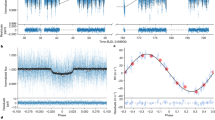Abstract
Recent determinations of the masses and radii of the planets may be interpreted as showing that the systems Earth–Moon–Mars and Mercury–Venus could have resulted from the break-up of two unstable planetary bodies of identical chemical composition. Thereby various features of planetary evolution would be elucidated.
Similar content being viewed by others
References
Lyttleton, R. A., Mon. Not. Roy. Astron. Soc., 121, 551 (1960); Mysteries of the Solar System (Clarendon Press, Oxford, 1968); Science J., 5, No. 5, 53 (May 1969).
Ash, M. E., Shapiro, I. I., and Smith, W. B., Astron. J., 72, 338 (1967).
Lyttleton, R. A., Mysteries of the Solar System, 94 (Clarendon Press, Oxford, 1968).
Allen, C. W., Astrophysical Quantities, second ed. (Athlone Press, London, 1963).
McCrea, W. H., Nature, 223, 253 (1969).
Roxburgh, I. W., Nature, 208, 65 (1965); Astrophys. J., 143, 111 (1966).
McCrea, W. H., and Williams, I. P., Proc. Roy. Soc., A, 287, 143 (1965).
Author information
Authors and Affiliations
Rights and permissions
About this article
Cite this article
McCREA, W. Densities of the Terrestrial Planets. Nature 224, 28–29 (1969). https://doi.org/10.1038/224028a0
Received:
Issue Date:
DOI: https://doi.org/10.1038/224028a0
- Springer Nature Limited





